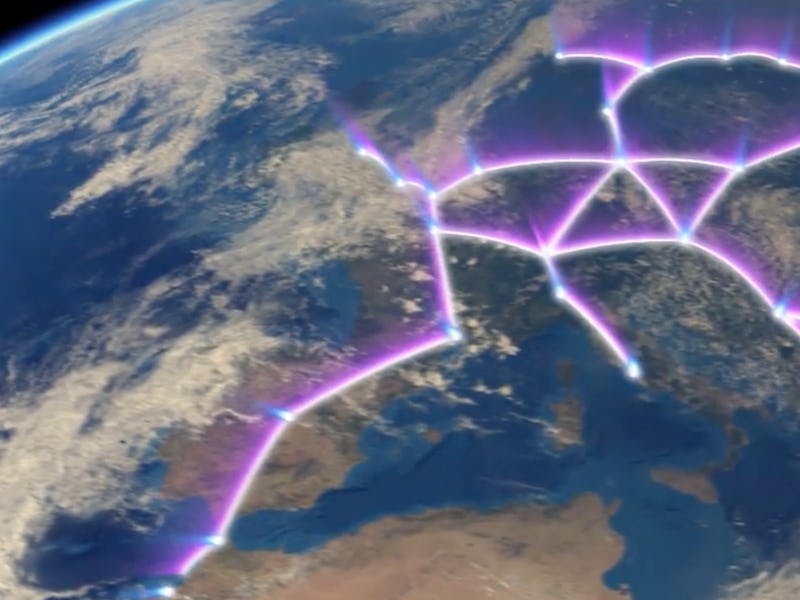Hyperloop One announced this week it has moved a step closer to building the world’s first publicly available hyperloop service. After a global competition that saw 2,600 teams of engineers and urban planners pitch their ideal routes, the Los Angeles-based company has whittled the contenders down to 10 promising proposals. These teams will now receive business resources to actively make their dreams come true.
Of the 10 finalists, two of the routes are in the United Kingdom. Skepticism is rife around Elon Musk’s idea to hurtle pods through a tube at 700 miles per hour, but the country could prove receptive to the outlandish idea. British trains are hideously expensive, with rising ticket prices outpacing inflation. Calls for renationalizing Britain’s railroads are growing louder, with 60 percent supporting the policy. Many parts of the country still don’t use electric trains. The country is calling out for an answer, and it could lend an ear to Hyperloop One’s big plans.
The U.K. isn’t exactly a leader in high-speed trains, either. The country has just one rail line suitable for such trains, the sensibly-named High Speed One, and it only opened in 2007. It goes from St. Pancras International station in London to the Channel Tunnel, which goes under the sea and comes out in France. Trains running along the line can travel at 186 miles per hour at its fastest point, meaning customers can get to places like Paris in two hours and 15 minutes and Brussels in just under two hours. It’s good, but it’s no hyperloop.
Hyperloop One has two proposals for the United Kingdom. The first one is dubbed the “northern arc,” so named because it connects the north of England with central Scotland in a big arc. It’s a 545-kilometer (339-mile) route for both passengers and cargo, and it could become an international gateway for freight. Liverpool to Leeds currently takes around an hour and a half by train, but a hyperloop could cut this to 13 minutes.
The northern arc.
This route could transform the economies of the connected cities, which are part of a region that has suffered from deindustrialization and lack of funding. A 2014 report from the Office of National Statistics said:
When compared with the rest of England, the latest data show that the North underperforms on several economic and social indicators. Its shares of economic output, jobs and household income fall below its share of the population. It has lower labour productivity. Life expectancy is shorter and average reported happiness is slightly lower than the rest of England.
In last year’s budget, the government planned £60 million ($81.4 million) to build a rail line between Manchester and Leeds, which would cut journey times from 49 minutes to 30 minutes. That’s good, but it’s not exactly the seven minutes proposed above. Hyperloop One has chosen a route that could have a major impact on the area, bringing opportunities closer together.
The second is what Hyperloop One is referring to as “the north-south connector,” a 666-kilometer (414-mile) route for only passengers. Where London to Birmingham currently takes 1 hour 21 minutes by train, this line would cut that to just 14 minutes. Similarly, Edinburgh to London would take 8 hours by car, 5 hours by train, or 1 hour 20 minutes by plane. With hyperloop, it takes just 50 minutes.
The north-south connector.
This one is quite interesting because it almost perfectly follows the planned route of High Speed 2. That line will connect London to Birmingham when the first phase opens in 2026, while a Y-shaped second phase connecting Manchester and Leeds will open in 2033.
It’s easy to see why Hyperloop One might want to start a bragging war with the British government. High Speed 2 is only expected to travel as fast as 250 miles per hour, which is a bit rubbish by comparison. London to Birmingham currently takes one hour and 21 minutes by train, and HS2 is expected to cut that to 49 minutes, but Hyperloop One claims it could get this down to just 14 minutes.
Both routes have the potential to transform a country that has lagged behind in the high speed rail race. Hyperloop One has only shown a pod traveling at 192 mph at its fastest speed, so it has a long way to go before it can keep these promises. But if it can come close to theoretical maximum speeds, it may find an audience.
